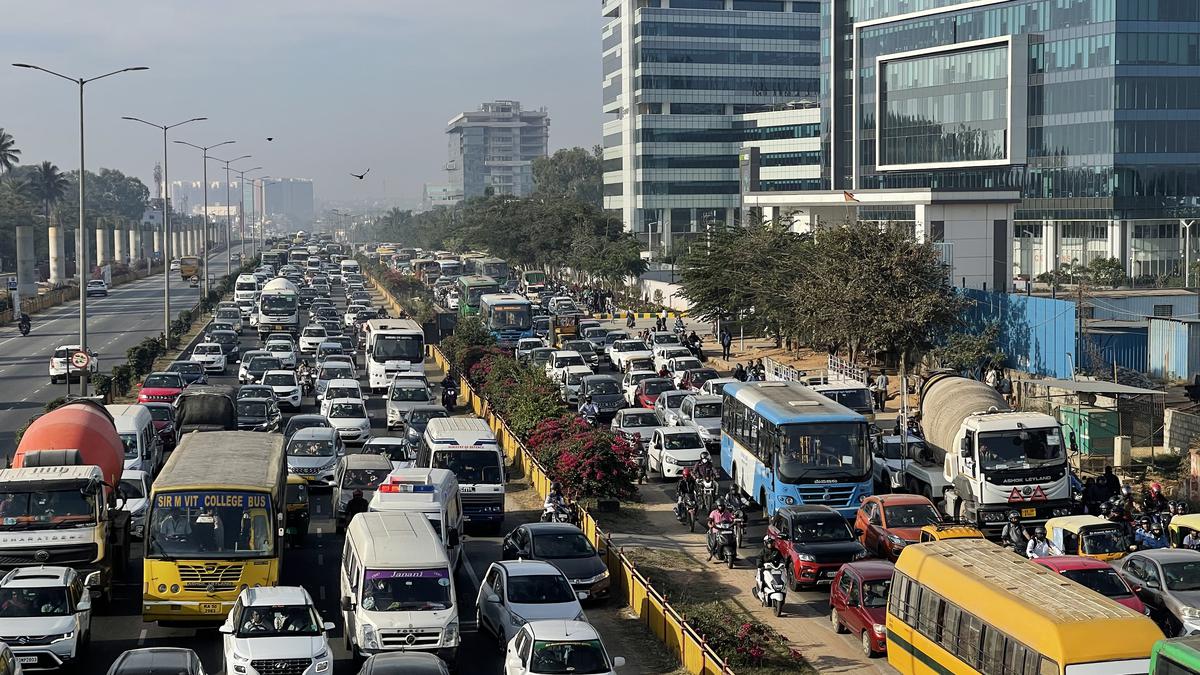Overloaded trucks are a very common sight on Indian roads and highways while they make little profits for the fleet owners and little savings for the consignor their impact on the physical upkeep of the roads as also the risk it poses to other vehicular traffic is great; needless to say overloaded trucks damage roads and highways and also result in causing road accidents. N Chandra Shekar throws light on the menace of truck overloading and the laws to mitigate the risks of overloading…
India is one of the fastest growing economies in the world with a rapidly growing infrastructure. For unhindered commercial activity; road connectivity is the key in linking production centres to market places. Rightly so India has embarked on developing road infrastructure in a massive way. A recent study has highlighted that around 60% of the goods are transported by roads leading to a phenomenal growth in commercial vehicles. With the improvement in the road infrastructure and last mile connectivity transportation of goods through roads has become the popular choice for manufacturers leading to a massive increase in commercial vehicles plying goods. Transport of goods and passengers by road has been growing at a fast pace. This notwithstanding, road transport has more than its due share of woes and impediments. In order to meet the market demand for more trucks fleet owners are resorting to overloading. Trucks after trucks, carrying more than their maximum capacity, navigate busy Indian roads. Overloaded vehicles on Indian roads are an unfortunate yet common sight. Overloaded trucks destroy roads and highways; they result in causing road accidents and killing more people.
According to surveys by the Indian Foundation of Transport Research and Training, one in every three truck in the country is overloaded and is to blame for 50% of road accidents. The Foundation said over 92,500 people were killed each year in road accidents in the country coming under the wheels of the overloaded vehicles.
It is a fact that when a truck is overloaded, control over steering and braking is reduced. This further diminishes both the productive life of the road and the productive life of the truck
Up until 2005, overloaded trucks did not face any scrutiny nor did they have to pay a penalty. While most State Governments issued tokens allowing the overloading of trucks after the payment of a fixed charge, others issued private passes through Transport Offices to allow overloaded trucks to pass through the State.
This scenario changed in 2005 after the Supreme Court issued an order to ban and penalise overloaded vehicles on all Indian roads. According to the judgment, any overloaded vehicle spotted on roads or highways is to be stopped and the extra load to be confiscated. The transporter would have to bear the cost of the off-loading and a heavy fine on the extra load. The judgment came as a welcome move towards the development of the infrastructure in India.
In order to reduce the overloading of trucks and accidents, the Government has taken some major steps. A high penalty has been proposed in the Road Transport and Safety Bill for those who fail to comply with the new rules, with a suspension of permits for one month upon the first offense and a cancellation of permits if the offense is repeated.
But this measure is not enough to solve the problem as the truck owners or operators are still continuing to load their trucks beyond the permissible axle load to maximize each vehicle’s earnings and the consignors of bulk commodities, like fertilizers, steel, and cement, overloaded the vehicles in order to get freight service cheap. They also pay higher prices to enter the city. Even there are few states that have almost legalized overloading by issuing formal permits, illicit payments mostly clear the way for the vehicles.
All these factors are creating problems and affecting the Indian economy, both directly and indirectly. The main issue lies in the implementation of the Motor Vehicles Act.
Revised Axle Load GVW of Indian Trucks 2023
On July 16, 2018, the Ministry of Road Transport and Highways (MoRTH) increased the maximum cap of axle load limit by 20 to 25 percent cross various categories to keep the limit “at par with international standards”. The Gross Vehicle Weight (GVW) of a two-axle truck was increased to 18.5 tonne from 16.2 tonne and GVW for a three-axle truck was increased to 28.5 tonne from 25 tonne. For a five-axle truck, the vehicle weight was increased from 37 tonne to 43.5 tonne. “The GVW shall not exceed the total permissible safe axle weight as above and in no case shall exceed (i) 49 tonnes in case of rigid vehicles; and (ii) 55 tonnes in case of semi-articulated trailers and truck trailers, except modular hydraulic trailers,” the Advisory issued by the Ministry said. The Amendment has been made after 35 years. The last Amendments were made in 1983, and they were implemented in 1988.
The Union Road Transport Minister Nitin Gadkari said that since the ruleswere out in public, they need to be implemented with immediate effect. “I think it’s a positive sign for the road transportation industry, and every trucker should take this in a positive way. Truck overloading has been a menace in India resulting in deterioration of roads and increasing number of accidents. Freight overloading up to 100% is a common thing, various transporters are doing it from many years.”
Box –
What is Truck
Overloading?
Truck overloading means “the truck is carrying more loads than its prescribed load limitations”. Every truck has a minimum and maximum capacity for carrying loads. If any trucks carry loads beyond their limitations, this is known as truck overloading. It may cause accidents and increase fuel consumption and maintenance costs.
Rules for Truck
Overloading
To avoid truck overloading, the Government of India has passed an act; giving powers to take strict action against truck overloading. According to Section 113 of The Motor Vehicles Act, 1988 Limits of Weight and Limitations on Use:
• The State Government may prescribe the conditions for the issue of permits for 1 [transport vehicles] by the State or Regional Transport Authorities and may prohibit or restrict the use of such vehicles in any area or route.
• Except as may be otherwise prescribed, no person shall drive or cause or allow to be driven in any public place any motor vehicle which is not fitted with pneumatic tyres.
• No person shall drive or cause or allow to be driven in any public place any motor vehicle or trailer.
o The unladen weight of which exceeds the unladen weight specified in the certificate of registration of the vehicle, or
o The laden weight of which exceeds the gross vehicle weight specified in the certificate of registration.
• Where the driver or person in charge of a motor vehicle or trailer driven in contravention of sub-section (2) or clause (a) of sub-section (3) is not the owner, a Court may presume that the offence was committed with the knowledge of or under the orders of the owner of the motor vehicle or trailer.
Supreme Court
Judgement on
Overloading of Trucks 2018
On July 20, 2018, the Supreme Court of India passed a judgment on the overloading of trucks. It states that any truck that exceeds 10% of its permissible limit would be fined
Rs. 20,000 for the first tonne and
Rs. 2,000 for every subsequent tone. The judgment also directed State Governments to set up weighbridges to check the weight of commercial vehicles. The judgment aimed to follow the rules, maintain the roads, and reduce accidents due to truck overloading.
Box –
FAQs
• How Much is a Semi-Truck’s Taxable Gross Weight?
The taxable gross weight of the vehicle is its total unloaded weight. The empty weight of a truck, truck tractor, or bus that is prepared for duty is referred to as its “unloaded weight”.
The actual unloaded weight of any trailers or semi-trucks that are properly equipped for operation and frequently utilised in conjunction with the vehicle, as well as the weight of the maximum load that the vehicle is generally capable of carrying.
• What is the importance of Gross Vehicle Weight?
A higher GVW will increase the likelihood of a heavier load, which will increase the transporter’s earnings.
• What does unladen truck weight mean?
The truck or vehicle’s unladen weight is its weight when it has nothing inside of it, such as cargo or a passenger.
• What is Gross Vehicle Weight (GVW)?
The total weight of all the axles beneath the chassis is known as the gross vehicle weight (GVW), and each axle has a specific rating according to the CMVR (Central Motor Vehicle Rules).
• How to find the Gross Vehicle Weight (GVW)?
Mathematically, Gross vehicle weight = Unladen weight + Payload
• What is the Gross Vehicle Weight Rating?
The maximum weight that a vehicle is intended to transport is known as the GVWR, and it includes the net weight of the vehicle plus all of its accessories as well as the weight of any passengers, fuel, and cargo. A safety measure used to avoid overloading is the GVWR.
• What is the difference between gross weight and net weight?
Gross weight includes the weight of the items, their packing, and any additional accessories used for shipment, whereas net weight just relates to the weight of the goods.
• Weight Calculation
Gross weight = net weight + packaging/ container weight.
Net weight = gross weight – tare weight.






